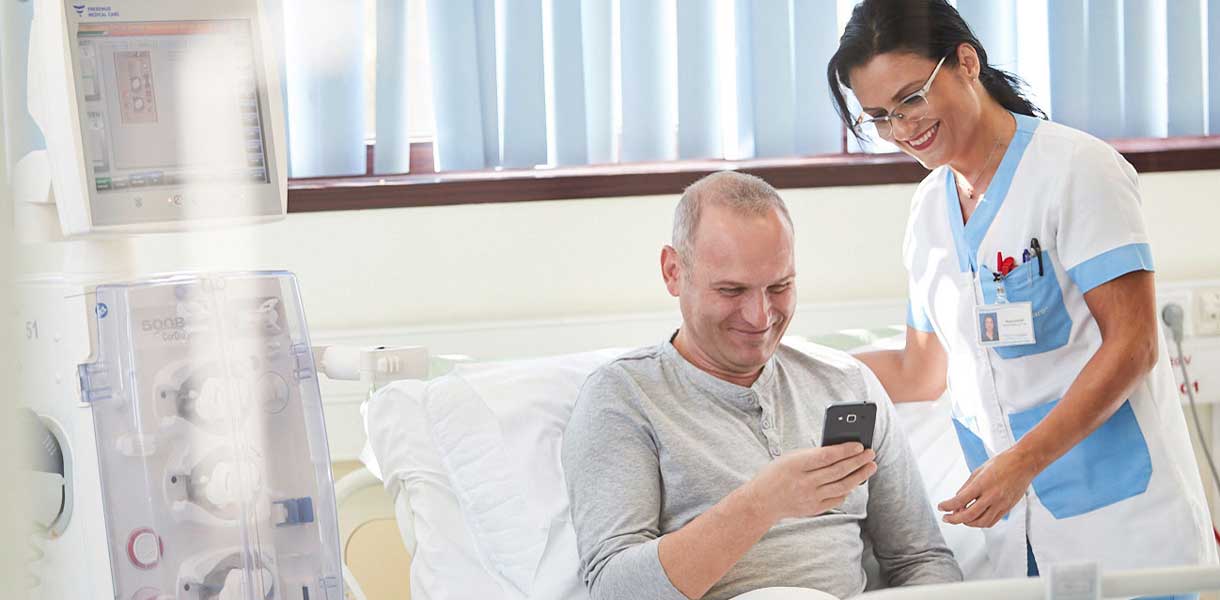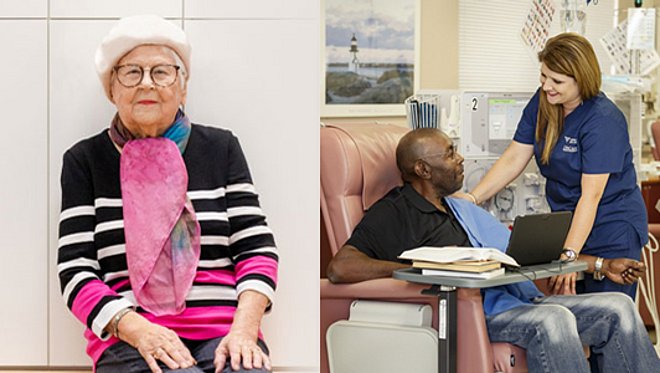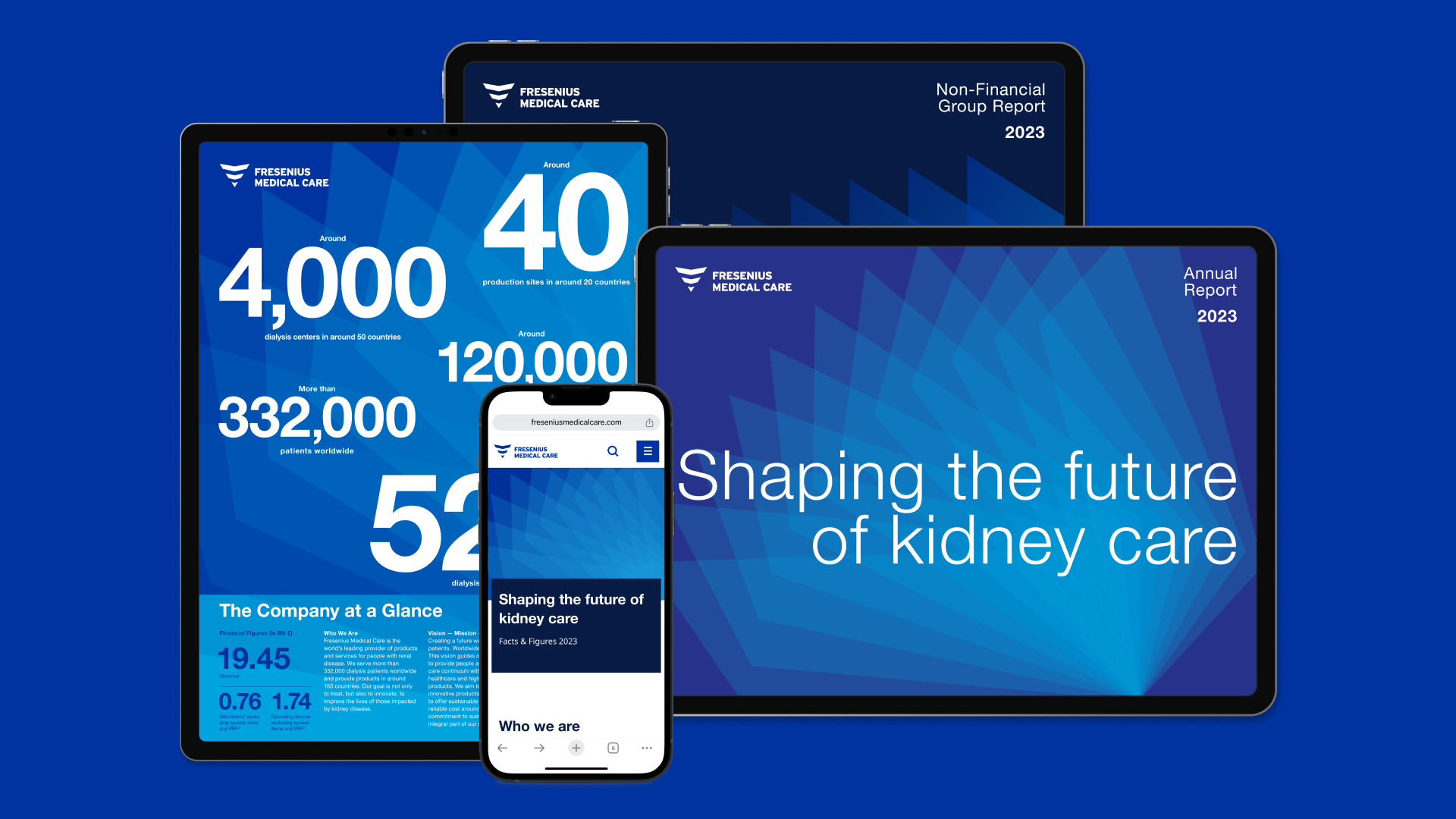The Next Big Leap: Connected Kidney Care
By Rice Powell, Chief Executive Officer and Chairman of the Management Board of Fresenius Medical Care
Only half a century ago, end-stage kidney disease (ESKD) was an inevitable death sentence. Today, the routine treatment we provide is saving the lives of many hundred of thousands of patients every year. But the science keeps evolving – and now many of us sense that a new leap is imminent.
The pandemic has accelerated the pace and scale of the transformation – or better yet: revolution – of the health care industry. When COVID-19 forced millions of people to stay home, digitalization and telehealth were shifted into hyper-drive. We now live in an increasingly connected health environment. Patients are more closely connected to their health care providers, who in turn can collect more data – and that will be the catalyst for big changes in kidney care.

Fresenius Medical Care already has access to the broadest dataset in the world on advanced kidney disease: a constantly growing collection of information from over 2 million patients, more than half a billion hemodialysis treatments, and almost 2 billion laboratory tests. Through our clinical research arm Frenova Renal Research, we want to build the largest registry of curated clinical data in the world.
In this data, we will find huge potential to improve our patients’ lives. Kidney disease, which affects approximately 10% of the adult population worldwide, is genetically complex, so it requires huge data sets like ours to evolve our understanding. What we are looking for are biomarkers that can tell us how susceptible individuals are to kidney disease and how they might respond to interventions. This will unlock the potential of precision medicine: In a much more targeted approach, we will be able to make reliable and insightful decisions specific to the individual in front of us. The right patient will get the right treatment at the right time.
Soon, we could attach much earlier to patients with chronic kidney disease. With digital care models, we can observe their heart rhythms, fluid volumes, and stress on the delicate muscles and blood vessels that feed the kidneys. This will improve our understanding of their cardiovascular health, which is the #1 comorbidity for our patients.
But that’s not all that digitalization can do. We already use the technology for virtual clinical trials, in which patients are represented by mathematical models or “avatars”. We can model and run hundreds of virtual trials to find out who and under which conditions will benefit the most when a new drug comes to market. The results of these tests in our existing models are highly correlated to the clinical outcomes we see in real life. No other company has advanced these research modeling techniques as far, and they help us improve the algorithms we use in our everyday clinical care today.
In the coming weeks, you will also hear about “My Reason”, a campaign we are initiating to engage more of our patients in our clinical research registry. This is their chance to give the future a great gift. Findings will catalyze research and hopefully save coming generations from many of the kidney-related challenges we must manage today.
Yet to keep advancing all of these efforts, we will need greater investment in kidney-related research. Genitourinary diseases get only 2.6 cents of every research dollar invested in the United States. Our society spends far more on treating patients who already suffer from kidney disease than it does on research that could help us combat its causes.
In summary, digitalization has enormous potential to revolutionize our industry. It is already changing every element of our business, from our operations to our clinics to the way we deal with health risks. Our goal is to pioneer new standards of digital care so that patients everywhere can benefit from our progress.

